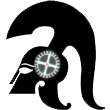


Rough Notes:
“Imagination is more important than knowledge. For knowledge is limited to all we now know and understand, while imagination embraces the entire world, and all there ever will be to know and understand.”
—Albert Einstein
Why is imagination just as important as knowledge, especially when it comes to today’s students? Why must both they and teachers really use imagination in learning?
Let’s start with the definitions of each:
- Imagination is considered the faculty or action of forming new ideas, or images or concepts of external objects not present to the senses.
- Knowledge is about facts, information, and the skills acquired by a person through experience or education; the theoretical or practical understanding of a subject.
An imaginative student would be free to take risks, be a leader, and state opinions as opposed to stating the correct answer. An imaginative teacher would be free to take risks, be a leader, and be adaptable to the changing needs of their students.
Our imagination changes. It is organic. It grows as knowledge grows. Knowledge feeds the imagination which spurs us on to new knowledge. Ultimately this is the cycle of discovery and of learning we strive for in education.
Is Imagination More Important Than Knowledge?
In a recent TED conversation, readers chimed in with the following insights:
“I think imagination DRIVES knowledge acquisition. If you are really passionate about a possibility you imagine (whether it’s a better education system or a revolutionary scientific theory), you will seek out the knowledge needed to test it or to turn your vision to reality.” (Ayesha Ratnayake)
“Creativity is the product of imagination. So, both of them need knowledge to work and grow up together. Knowledge is static and creativity is changing, change is needed for new things to happen but to have change, there must first be something to change; knowledge.” (Thomas Z.)
“Both are necessary. Imagination drives inquiry and inquiry eventually leads to knowledge. With additional knowledge new levels of imagination become possible.” (Harald Jezek)
An Imaginary Field Trip
Imagine that you are about to go on a camping trip. You imagine the road trip and its potential adventures. You picture yourself relaxing in your tent with your family or friends. You’ll be fishing and cooking food in the great outdoors, gazing at the stars at night, and singing around the campfire.
First, you need to pack. You take inventory on things you have, make a checklist of things you don’t, then set about to acquire those things.
This “packing” stage is the knowledge stage of the experience. You gather your tools and use what you know. But we would not have come to the packing stage without first experiencing the imagination stage.
Next, there’s also the actual journey and the process of bringing your idea to life. Imagination then takes those experiences acquired from the “doing” stage and gives them meaning.
A Call to ARMs
It can be explained using the acronym ARM—we Act, Reflect, and finally Move.
In other words, an action is performed. We use imagination to reflect on the meaning of that action. We are changed by the experience and our paradigms are shifted. We “move.” We cannot go back to not knowing, nor can we go back to not experiencing. We have done both and so we are changed. We are spurred to another action.
Imagination drives this entire process. It’s the dark matter which binds all learning together.
How Do You Teach Imagination?
That’s the thing—you can’t really teach it. One can certainly model it. One can certainly use guiding questions to spur imagination. However, it is the individual that controls it and harnesses it. We can teach others to take their imagination to fruition, but we cannot imagine for them. It is the one thing that individuals own.
Imagination’s enemy is fear. So a place to start would be creating a safe space for dissenting ideas to be spoken and discussed.
Mind maps can help organize a flurry of imagined ideas and give visual imagery to them. Collaborative task organizers can combine imagined ideas from many people and sources. See our Solution Fluency Activity Planner as another example.
This is all not to diminish the role of knowledge in the learning process. Imagination and knowledge go hand in hand. An illustration of this complementary role in society comes from Joseph Campbell. In his mind, mythology was the essence of imagination. While science (knowledge) can explain things at their deepest physical level, mythology gives story to that knowledge and meaning to the elemental.
The learning process is an endless cycle—not only individually, but throughout society and human endeavours. The great thinkers and inventors of the past have shown it already. Sir Isaac Newton said it best: If I have seen further than others, it is by standing upon the shoulders of giants.
Use your imagination and ask your students to use theirs, and ponder this question together: Where should we go next?


